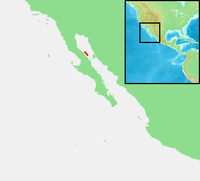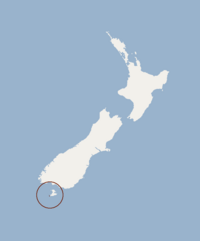Rare species: Difference between revisions
JJMC89 bot (talk | contribs) Removed WP:NFCC violation(s). No valid non-free use rationale for this page. See WP:NFC#Implementation. Questions? Ask here. |
|||
| (43 intermediate revisions by 6 users not shown) | |||
| Line 7: | Line 7: | ||
Rare species are species with small populations. Many will move into the endangered or vulnerable category if the negative factors affecting them continue to operate. Well-known examples of rare species - because these are large terrestrial animals - include the [[Himalayan brown bear]], [[Fennec fox]], [[Wild Asiatic buffalo]], or the [[Hornbill]]. |
Rare species are species with small populations. Many will move into the endangered or vulnerable category if the negative factors affecting them continue to operate. Well-known examples of rare species - because these are large terrestrial animals - include the [[Himalayan brown bear]], [[Fennec fox]], [[Wild Asiatic buffalo]], or the [[Hornbill]]. |
||
They are not endangered yet, but classified as "at risk",<ref>{{Cite web |url=http://www.encyclopedia.com/environment/encyclopedias-almanacs-transcripts-and-maps/rare-species |title=Rare Species |website=www.encyclopedia.com |language=en |access-date=2017-11-15}}</ref><ref>{{Cite news |url=https://www.iucn.org/node/29228 |title=IUCN – A brief history |date=2017-10-06 |work=IUCN |access-date=2017-11-15 |language=en |archive-date=2017-11-15 |archive-url=https://web.archive.org/web/20171115083201/https://www.iucn.org/node/29228 |url-status=dead }}</ref> although the frontier between these categories is increasingly difficult to draw given the general paucity of data on rare species. This is especially the case in the world Ocean where many 'rare' species not seen for decades may well have gone extinct unnoticed, if they are not already on the verge of extinction like the Mexican [[Vaquita]].<ref>{{cite news |last1=Briand |first1=Frederic |title=Species Missing in Action - Rare or Already Extinct? |url=https://www.researchgate.net/publication/233408388 |work=National Geographic |date=October 2012}}</ref> |
They are not endangered yet, but classified as "at risk",<ref>{{Cite web |url=http://www.encyclopedia.com/environment/encyclopedias-almanacs-transcripts-and-maps/rare-species |title=Rare Species |website=www.encyclopedia.com |language=en |access-date=2017-11-15}}</ref><ref>{{Cite news |url=https://www.iucn.org/node/29228 |title=IUCN – A brief history |date=2017-10-06 |work=IUCN |access-date=2017-11-15 |language=en |archive-date=2017-11-15 |archive-url=https://web.archive.org/web/20171115083201/https://www.iucn.org/node/29228 |url-status=dead }}</ref> although the frontier between these categories is increasingly difficult to draw given the general paucity of data on rare species. This is especially the case in the world Ocean where many 'rare' species not seen for decades may well have gone extinct unnoticed, if they are not already on the verge of extinction like the Mexican [[Vaquita]].<ref>{{cite news |last1=Briand |first1=Frederic |title=Species Missing in Action - Rare or Already Extinct? |url=https://www.researchgate.net/publication/233408388 |work=National Geographic |date=October 2012}}</ref> |
||
A species may be endangered or vulnerable, but not considered rare if it has a large, dispersed population. [[IUCN]] uses the term "rare" as a designation for species found in isolated geographical locations. Rare species are generally considered threatened because a [[small population size]] is less likely to recover from [[Environmental disaster|ecological disasters]]. |
A species may be endangered or vulnerable, but not considered rare if it has a large, dispersed population. [[IUCN]] uses the term "rare" as a designation for species found in isolated geographical locations. Rare species are generally considered threatened because a [[small population size]] is less likely to recover from [[Environmental disaster|ecological disasters]]. |
||
| Line 32: | Line 32: | ||
! Common name !! ''[[Binomial nomenclature|Scientific name]]'' !! Image !! Last sighting !! Estimated population of mature individuals !! [[Endemic]] geographic location |
! Common name !! ''[[Binomial nomenclature|Scientific name]]'' !! Image !! Last sighting !! Estimated population of mature individuals !! [[Endemic]] geographic location |
||
|- |
|- |
||
|[[La Vega racer|La Vega Racer]] |
|||
| [[Gloomy tube-nosed bat]] || ''[[Murina tenebrosa]]'' || || {{dts|1962}} || data-sort-value="1" | '''0-1''' || [[Tsushima Island]] & [[Yakushima]], [[Japan]] |
|||
|''[[Hypsirhynchus melanichnus]]'' |
|||
| |
|||
|1910 |
|||
|0-25 |
|||
|[[Hispaniola]] |
|||
|- |
|- |
||
|[[Hispaniolan two-lined skink]] |
|||
| [[Emperor rat]] || ''[[Uromys imperator]]'' || || {{dts|1959}} or prior || data-sort-value="3" | '''0-3''' || [[File:GuadalcanalCloseup.png|200px]] |
|||
|''[[Mabuya hispaniolae]]'' |
|||
| |
|||
|1937 |
|||
|0-50 |
|||
|[[Dominican Republic]] |
|||
|- |
|- |
||
|[[Spondylurus lineolatus|Hispaniolan Ten-lined Skink]] |
|||
| [[Guadalcanal rat]] || ''[[Uromys porculus]]'' || || {{dts|1888}} || data-sort-value="3" | '''0-3''' || [[File:GuadalcanalCloseup.png|200px]] |
|||
|''[[Spondylurus lineolatus]]'' |
|||
| |
|||
|1985 |
|||
|0-50 |
|||
|[[Hispaniola]] (northern [[Haiti]] and northwestern [[Dominican Republic]]) |
|||
|- |
|- |
||
| [[ |
| [[Gloomy tube-nosed bat]]|| ''[[Murina tenebrosa]]''|| || {{dts|1962}}|| data-sort-value="1" | 0-1 || [[Tsushima Island]] & [[Yakushima]], [[Japan]] |
||
|- |
|- |
||
| [[ |
| [[Emperor rat]]|| ''[[Uromys imperator]]''|| || {{dts|1959}} or prior || data-sort-value="3" | 0-3 || [[File:GuadalcanalCloseup.png|200px]] |
||
|- |
|- |
||
|[[ |
| [[Guadalcanal rat]]|| ''[[Uromys porculus]]''|| || {{dts|1888}}|| data-sort-value="3" | 0-3 || [[File:GuadalcanalCloseup.png|200px]] |
||
|- |
|- |
||
| [[ |
| [[One-striped opossum]]|| ''[[Monodelphis unistriata]]''|| || {{dts|9 April 1899}}|| data-sort-value="10" | 0-10 || [[File:Single-striped Opossum area.png|200px]] |
||
|- |
|- |
||
| [[ |
| [[Baiji]]|| ''[[Lipotes vexillifer]]''|| [[File:Baiji 1.jpg|65px]]|| {{dts|14 May 2024}}|| data-sort-value="19" | 0-19 || [[File:Yangtze Dolphins range.jpg|200px]] |
||
|- |
|- |
||
| |
|[[Glaucous macaw|Glacous macaw]]|| ''[[Anodorhynchus glaucus]]''|| [[File:Anodorhynchus glaucus.jpg|65px]]|| {{dts|1951}}|| data-sort-value="20" | 0-20 || [[File:Anodorhynchus glaucus map.svg|200px]] |
||
|- |
|- |
||
| [[ |
| [[Angel Island mouse]]|| ''[[Peromyscus guardia]]''|| || {{dts|1991}}|| data-sort-value="49" | 0-49 || [[File:Mexico - Isla Ángel de la Guarda.PNG|200px]] |
||
|- |
|- |
||
| [[ |
| [[Aru flying fox]]|| ''[[Pteropus aruensis]]''|| [[File:Pteropus aruensis.jpg|65px]]|| {{dts|1867}}|| data-sort-value="49" | 0-49 || [[Trangan]], [[Indonesia]] |
||
|- |
|- |
||
| [[ |
| [[Cuban ivory-billed woodpecker]]|| ''[[Campephilus principalis bairdii]]''|| [[File:Campephilus principalis bairdii.jpg|65px]]|| {{dts|28 April 1987}}|| data-sort-value="49" | 0-49 || [[Cuba]] |
||
|- |
|- |
||
|[[Imperial woodpecker]] |
|||
| [[Melanomys zunigae|Zuniga's melanomys]] || ''[[Melanomys zunigae]]'' || || {{dts|1949}} || data-sort-value="49" | '''0-49''' || [[Lima Department]], [[Peru]] |
|||
|''[[Imperial woodpecker|Campephilus imperialis]]'' |
|||
|[[File:Kaiserspecht fg02.jpg|90x90px]] |
|||
|1956 |
|||
|0-49 |
|||
|[[File:Campephilus imperialis map.svg|200x200px]] |
|||
|- |
|- |
||
| [[ |
| [[Emma's giant rat]]|| ''[[Uromys emmae]]''|| || {{dts|1994}}|| data-sort-value="49" | 0-49 || [[Owi Island]], [[Indonesia]] |
||
|- |
|- |
||
| [[ |
| [[Ethiopian amphibious rat]]|| ''[[Nilopegamys plumbeus]]''|| [[File:Nilopegamys restoration.png|65px]]|| {{dts|1928}}|| data-sort-value="49" | 0-49 || [[File:Distribution of Nilopegamys plumbeus.png|200px]] |
||
|- |
|- |
||
| [[ |
| [[Garrido's hutia]]|| ''[[Capromys garridoi]]''|| || {{dts|1989}}|| data-sort-value="49" | 0-49 || Banco de los Jardins y Jardinillos, [[Canarreos Archipelago]], [[Cuba]] |
||
|- |
|- |
||
| [[ |
| [[Melanomys zunigae|Zuniga's melanomys]]|| ''[[Melanomys zunigae]]''|| || {{dts|1949}}|| data-sort-value="49" | 0-49 || [[Lima Department]], [[Peru]] |
||
|- |
|- |
||
| [[ |
| [[Dwarf hutia]]|| ''[[Mesocapromys nana]]''|| || {{dts|26 October 1951}}|| data-sort-value="50" | 0-50 || [[Zapata Swamp]], [[Cuba]] |
||
|- |
|- |
||
| [[ |
| [[New Zealand greater short-tailed bat]]|| ''[[Mystacina robusta]]''|| [[File:Mystacina robusta specimen from Auckland Museum.jpg|65px]]|| {{dts|23 January 1967}}|| data-sort-value="50" | 0-50 || [[File:Distribution of Mystacina robusta.png|200px]] |
||
|- |
|- |
||
| [[ |
| [[Puebla deer mouse]]|| ''[[Peromyscus mekisturus]]''|| || {{dts|1948}}|| data-sort-value="50" | 0-50 || [[File:Puebla in Mexico (location map scheme).svg|200px]] |
||
|- |
|- |
||
| [[ |
| [[Kouprey]]|| ''[[Bos sauveli]]''||[[File:Saen Monourom Mondul Kiri Cambodia crop.jpg|65px]]|| {{dts|1988}}|| data-sort-value="50" | 0-50 || [[File:Bos sauveli distribution.svg|200px]] |
||
|- |
|||
| [[Montane monkey-faced bat]]|| ''[[Pteralopex pulchra]]''|| || {{dts|17 May 1990}}|| data-sort-value="50" | 0-50 || [[File:Montane Monkey-faced Bat area.png|200px]] |
|||
|- |
|||
| [[San Felipe hutia]] || ''[[Mesocapromys sanfelipensis]]'' || [[File:Mesocapromys sanfelipensis drawing.jpg|65px]] || {{dts|1978}} || data-sort-value="99" | 0-99 || Cayo de Juan Garcia & Cayos de San Felipe, [[Cuba]] |
|||
|- |
|||
| [[Christmas Island shrew]] || ''[[Crocidura trichura]]'' || || {{dts|1998}} || data-sort-value="200" | 0-200 || [[File:Christmas Island Shrew area.png|200px]] |
|||
|- |
|||
| [[Malabar large-spotted civet]] || ''[[Viverra civettina]]'' || [[File:Malabar large-spotted civet (Viverra civettina) DSCN2359 (cut).jpg|65px]] || {{dts|1993}} || data-sort-value="249" | 0-249 || [[File:Malabar Large-spotted Civet area.png|200px]] |
|||
|- |
|- |
||
|} |
|} |
||
==Critically Endangered / Extinct in the Wild |
==Critically Endangered / Extinct in the Wild == |
||
{{sticky header}} |
{{sticky header}} |
||
{| class="wikitable sortable sticky-header" style="text-align:center" |
{| class="wikitable sortable sticky-header" style="text-align:center" |
||
| Line 83: | Line 111: | ||
|- |
|- |
||
| [[Northern white rhinoceros]] || ''[[Ceratotherium simum cottoni]]'' || [[File:Northern White Rhino.jpg|65px]] || N/A || Critically Endangered (Possibly [[Extinct in the Wild]]) A2abcd; C1+2a(i,ii); D || 0 || {{dts|2}} || '''{{dts|2}}''' || [[File:Northern white rhino IUCN distribution.svg|200px]] |
| [[Northern white rhinoceros]] || ''[[Ceratotherium simum cottoni]]'' || [[File:Northern White Rhino.jpg|65px]] || N/A || Critically Endangered (Possibly [[Extinct in the Wild]]) A2abcd; C1+2a(i,ii); D || 0 || {{dts|2}} || '''{{dts|2}}''' || [[File:Northern white rhino IUCN distribution.svg|200px]] |
||
|- |
|||
|[[Barbary lion]] |
|||
|[[Panthera leo leo]] |
|||
|[[File:Barbary Lion from Keystone Safari, Grove City Pennsylvania.jpg|88x88px]] |
|||
|N/A |
|||
|Extinct in the Wild |
|||
|0 |
|||
|98 |
|||
|'''98''' |
|||
|[[Belfast Zoo]], [[Ireland]] |
|||
[[Rabat Zoo]], [[Morocco]] |
|||
Keystone Safari, [[United States]] |
|||
|- |
|- |
||
| [[Yangtze giant softshell turtle]] || ''[[Rafetus swinhoei]]'' || [[File:Rùa Đồng Mô.jpg|65px]] || N/A || Critically Endangered A2acd; D || {{dts|2}} || {{dts|1}} || '''{{dts|3}}''' || [[File:Rafetus2.png|200px]] |
| [[Yangtze giant softshell turtle]] || ''[[Rafetus swinhoei]]'' || [[File:Rùa Đồng Mô.jpg|65px]] || N/A || Critically Endangered A2acd; D || {{dts|2}} || {{dts|1}} || '''{{dts|3}}''' || [[File:Rafetus2.png|200px]] |
||
|- |
|- |
||
| [[American ivory-billed woodpecker]] || ''[[Campephilus principalis|Campephilus principalis principalis]]'' || [[File:Ivory-billed Woodpecker.jpg|65px]] || {{dts|8 April 2022}} || Critically Endangered D || data-sort-value="5" | |
| [[American ivory-billed woodpecker]] || ''[[Campephilus principalis|Campephilus principalis principalis]]'' || [[File:Ivory-billed Woodpecker.jpg|65px]] || {{dts|8 April 2022}} || Critically Endangered D || data-sort-value="5" | 1-50 || 0 || data-sort-value="5" | '''1-50''' || [[File:Original range of the ivory-billed woodpecker.jpg|200px]] |
||
|- |
|||
| [[Fernandina Island Galápagos tortoise]] || ''[[Fernandina Island Galápagos tortoise|Chelonoidis niger phantasticus]]'' ||[[File:Chelonoidis nigra phantastica.jpg|65px]] || N/A || Critically Endangered <span style="text-decoration:line-through;">(Possibly Extinct)</span> D || data-sort-value="5" | 0-5 || data-sort-value="1" | 1 || data-sort-value="6" | '''1-6''' || [[File:Map of the Galapagos tortoises.jpg|200px]] |
|||
|- |
|||
| [[Northern Sumatran rhinoceros]] || ''[[Dicerorhinus sumatrensis lasiotis]]'' || [[File:Jackson rhino.jpg|65px]] || {{dts|1993}} || Critically Endangered A2abd; C1+2a(i) || data-sort-value="9" | 0-9 || 0 || data-sort-value="9" | '''0-9''' || [[Tamanthi Wildlife Sanctuary]], [[Myanmar]] |
|||
|- |
|||
| [[Vaquita]] || ''[[Phocoena sinus]]'' || [[File:Vaquita2 Olson NOAA crop2.jpg|65px]] || {{dts|May 2024}}|| Critically Endangered A2a; C1+2a(ii); D; E || data-sort-value="10" | 6-10 || 0 || data-sort-value="10" | '''6-10''' || [[File:Cetacea range map Vaquita.PNG|200px]] |
|||
|- |
|- |
||
| [[ |
| [[Baishanzu fir]] || ''[[Abies beshanzuensis]]'' || || N/A || Critically Endangered D || data-sort-value="3" | 3 || data-sort-value="9" | 1-9 || data-sort-value="12" | 4-12 || [[File:Abies beshanzuensis distribution map.svg|200px]] |
||
|- |
|- |
||
| [[ |
| [[Bornean rhinoceros]] || ''[[Dicerorhinus sumatrensis harrissoni]]'' || [[File:0515rhino01.jpg|65px]] || N/A || Critically Endangered A2cd+3cd+4cd; C2a(i); D || data-sort-value="14" | 0-14 || data-sort-value="1" | 1 || data-sort-value="15" | '''1-15''' || |
||
* [[East Kalimantan]], [[Indonesia]] |
|||
* [[Sarawak]], [[Malaysia]] |
|||
|- |
|- |
||
| [[Wood's cycad]] || ''[[Encephalartos woodii]]'' || [[File:Encephalartos woodii original stem Durban Botanic Gardens 04 09 2010.JPG|65px]] || N/A || Extinct in the Wild || 0 || data-sort-value="36" | 1-36 || data-sort-value="36" | '''1-36''' || [[Kirstenbosch National Botanical Garden]], [[South Africa]] |
| [[Wood's cycad]] || ''[[Encephalartos woodii]]'' || [[File:Encephalartos woodii original stem Durban Botanic Gardens 04 09 2010.JPG|65px]] || N/A || Extinct in the Wild || 0 || data-sort-value="36" | 1-36 || data-sort-value="36" | '''1-36''' || [[Kirstenbosch National Botanical Garden]], [[South Africa]] |
||
|- |
|- |
||
|[[Hyophorbe amaricaulis|Loneliest palm]] |
|||
| [[Bornean rhinoceros]] || ''[[Dicerorhinus sumatrensis harrissoni]]'' || [[File:0515rhino01.jpg|65px]] || N/A || Critically Endangered A2cd+3cd+4cd; C2a(i); D || data-sort-value="30" | 20-30 || data-sort-value="10" | 5-10 || data-sort-value="40" | '''25-40''' || [[East Kalimantan]], [[Indonesia]] & [[Sarawak]], [[Malaysia]] |
|||
|''[[Hyophorbe amaricaulis]]'' |
|||
|[[File:Hyophorbe-amaricaulis.JPG|87x87px]] |
|||
|N/A |
|||
|Critically Endangered |
|||
|??? |
|||
|1 |
|||
|'''1''' |
|||
|[[Curepipe Botanic Gardens]], [[Mauritius]] |
|||
|- |
|||
| [[Hainan black crested gibbon]] || ''[[Nomascus hainanus]]'' || [[File:Nomascus nasutus hainanus.jpg|65px]] || {{dts|2023}} || Critically Endangered A2acd; B1ab(iii); D || data-sort-value="37" | 36-37 || 0 || data-sort-value="37" | '''36-37''' || [[File:Hainan Black Crested Gibbon area.png|200px]] |
|||
|- |
|- |
||
| [[Gobi bear]] || ''[[Ursus arctos gobiensis]]'' || [[File:Ursus arctos gobiensis.jpg|65px]] || {{dts|12 April 2023}} || Critically Endangered || data-sort-value="40" | 30-40 || 0 || data-sort-value="40" | '''30-40''' || [[File:Gobi desert en.jpg|200px]] |
| [[Gobi bear]] || ''[[Ursus arctos gobiensis]]'' || [[File:Ursus arctos gobiensis.jpg|65px]] || {{dts|12 April 2023}} || Critically Endangered || data-sort-value="40" | 30-40 || 0 || data-sort-value="40" | '''30-40''' || [[File:Gobi desert en.jpg|200px]] |
||
|- |
|- |
||
| [[Māui dolphin]] || ''[[Cephalorhynchus hectori maui]]'' || [[File:Two Maui's dolphins.jpg|65px]] || {{dts|28 January 2023}} || Critically Endangered A2cd+4cd; C2a(i,ii); D || data-sort-value="64" | 48-64 || 0 || data-sort-value="64" | '''48-64''' || [[File:Maui's dolphin range net ban.jpg|200px]] |
| [[Māui dolphin]] || ''[[Cephalorhynchus hectori maui]]'' || [[File:Two Maui's dolphins.jpg|65px]] || {{dts|28 January 2023}} || Critically Endangered A2cd+4cd; C2a(i,ii); D || data-sort-value="64" | 48-64 || 0 || data-sort-value="64" | '''48-64''' || [[File:Maui's dolphin range net ban.jpg|200px]] |
||
|- |
|||
|[[Colossal squid]] |
|||
|''[[Mesonychoteuthis hamiltoni]]'' |
|||
| |
|||
|2015 |
|||
|Least Concern |
|||
|??? |
|||
|0 |
|||
|'''???''' |
|||
|[[File:Mesonychoteuthis map.gif|259x259px]] |
|||
|- |
|- |
||
| [[Indonesian Javan rhinoceros]] || ''[[Rhinoceros sondaicus sondaicus]]'' || [[File:Rhinoceros sondaicus in London Zoo.jpg|65px]] || {{dts|17 March 2023}} || Critically Endangered D || data-sort-value="81" | 76-80 || 0 || data-sort-value="80" | '''76-80''' || [[File:Javan Rhino Range.svg|200px]] |
| [[Indonesian Javan rhinoceros]] || ''[[Rhinoceros sondaicus sondaicus]]'' || [[File:Rhinoceros sondaicus in London Zoo.jpg|65px]] || {{dts|17 March 2023}} || Critically Endangered D || data-sort-value="81" | 76-80 || 0 || data-sort-value="80" | '''76-80''' || [[File:Javan Rhino Range.svg|200px]] |
||
| Line 104: | Line 172: | ||
| [[Western Sumatran rhinoceros]] || ''[[Dicerorhinus sumatrensis sumatrensis]]'' || [[File:Sumatran Rhinoceros Way Kambas 2008.jpg|65px]] || N/A || Critically Endangered A2cd+3cd+4cd; C2a(i); D || data-sort-value="80" | 30-80 || data-sort-value="8" | 7-8 || data-sort-value="88" | '''37-88''' || [[File:Sumatran Rhino range.svg|200px]] |
| [[Western Sumatran rhinoceros]] || ''[[Dicerorhinus sumatrensis sumatrensis]]'' || [[File:Sumatran Rhinoceros Way Kambas 2008.jpg|65px]] || N/A || Critically Endangered A2cd+3cd+4cd; C2a(i); D || data-sort-value="80" | 30-80 || data-sort-value="8" | 7-8 || data-sort-value="88" | '''37-88''' || [[File:Sumatran Rhino range.svg|200px]] |
||
|- |
|- |
||
| [[Erythrolamprus ornatus|Ornate Ground snake]] || ''[[Erythrolamprus ornatus]]'' || || {{dts|2012}} || Critically Endangered D || data-sort-value="100" | 18-100 || 0 || data-sort-value="100" | '''18-100''' || [https://geohack.toolforge.org/geohack.php?pagename=Geography_of_Saint_Lucia¶ms=13.72588_N_60.93094_W_&title=Maria+Island+Nature+Reserve Maria Islands Nature Reserve], |
| [[Erythrolamprus ornatus|Ornate Ground snake]] || ''[[Erythrolamprus ornatus]]'' || || {{dts|2012}} || Critically Endangered D || data-sort-value="100" | 18-100 || 0 || data-sort-value="100" | '''18-100''' || [https://geohack.toolforge.org/geohack.php?pagename=Geography_of_Saint_Lucia¶ms=13.72588_N_60.93094_W_&title=Maria+Island+Nature+Reserve Maria Islands Nature Reserve], [[Saint Lucia]] |
||
|- |
|- |
||
| [[Saola]] || ''[[Pseudoryx nghetinhensis]]'' || [[File:Pseudoryx nghetinhensis, b.PNG|65px]] || {{dts|August 2013}} ||Critically Endangered A2acd+3cd+4acd; C2a(i) || data-sort-value="100" | 20-100 || 0 || data-sort-value="100" | '''20-100''' || [[File:Pseudoryx nghetinhensis distribution.png|200px]] |
| [[Saola]] || ''[[Pseudoryx nghetinhensis]]'' || [[File:Pseudoryx nghetinhensis, b.PNG|65px]] || {{dts|August 2013}} ||Critically Endangered A2acd+3cd+4acd; C2a(i) || data-sort-value="100" | 20-100 || 0 || data-sort-value="100" | '''20-100''' || [[File:Pseudoryx nghetinhensis distribution.png|200px]] |
||
| Line 110: | Line 178: | ||
| [[Alagoas curassow]] || ''[[Mitu mitu]]'' || [[File:Mitu mitu 1838.jpg|65px]] || N/A || [[Extinct in the Wild]] || 0 || data-sort-value="100" | 50-100 || data-sort-value="100" | '''50-100''' || [[File:Mitu mitu map.svg|200px]] |
| [[Alagoas curassow]] || ''[[Mitu mitu]]'' || [[File:Mitu mitu 1838.jpg|65px]] || N/A || [[Extinct in the Wild]] || 0 || data-sort-value="100" | 50-100 || data-sort-value="100" | '''50-100''' || [[File:Mitu mitu map.svg|200px]] |
||
|- |
|- |
||
| [[Horrid ground-weaver]] || ''[[Nothophantes horridus]]'' || [[File:Horrid Ground Weaver (Nothophantes horridus).jpg|65px]] || N/A || Critically Endangered A3c || data-sort-value="99" | 1-99 || data-sort-value="9" | 1-9 || data-sort-value="108" | '''2-108''' || |
| [[Horrid ground-weaver]] || ''[[Nothophantes horridus]]'' || [[File:Horrid Ground Weaver (Nothophantes horridus).jpg|65px]] || N/A || Critically Endangered A3c || data-sort-value="99" | 1-99 || data-sort-value="9" | 1-9 || data-sort-value="108" | '''2-108''' || |
||
* [https://geohack.toolforge.org/geohack.php?pagename=Rare_species¶ms=50.365_N_4.087_W_ Billacombe Quarry], Plymstock, Plymouth, [[United Kingdom of Great Britain and Northern Ireland]] (UK) |
|||
* [https://geohack.toolforge.org/geohack.php?pagename=Rare_species¶ms=50.3711_N_4.1256_W_ Plymouth Trade Park], [[Cattedown]], Plymouth, UK |
|||
* [https://geohack.toolforge.org/geohack.php?pagename=Rare_species¶ms=50.3754_N_4.0858_W_ Radford Quarry], [[Plymstock]], [[Plymouth]], UK |
|||
|- |
|- |
||
| [[Cat Ba langur]] || ''[[Trachypithecus poliocephalus]]'' || [[File:Cat Ba Langur 9.jpg|65px]] || {{dts|8 November 2022}} || Critically Endangered D || data-sort-value="159" | 130-150 || 0 || data-sort-value="159" | '''130-150''' || [[File:White-headed Langur area.png|200px]] |
| [[Cat Ba langur]] || ''[[Trachypithecus poliocephalus]]'' || [[File:Cat Ba Langur 9.jpg|65px]] || {{dts|8 November 2022}} || Critically Endangered D || data-sort-value="159" | 130-150 || 0 || data-sort-value="159" | '''130-150''' || [[File:White-headed Langur area.png|200px]] |
||
| Line 120: | Line 191: | ||
| [[Devils Hole pupfish]] || ''[[Cyprinodon diabolis]]'' || [[File:Cyprinodon diabolis, males.jpg|65px]] || N/A || Critically Endangered B1ab(v)+2ab(v); C2a(ii) || data-sort-value="201" | 100-200 || data-sort-value="9" | 1-9 || data-sort-value="200" | '''101-209''' || [[Devils Hole]], [[Death Valley National Park]], [[United States of America]] |
| [[Devils Hole pupfish]] || ''[[Cyprinodon diabolis]]'' || [[File:Cyprinodon diabolis, males.jpg|65px]] || N/A || Critically Endangered B1ab(v)+2ab(v); C2a(ii) || data-sort-value="201" | 100-200 || data-sort-value="9" | 1-9 || data-sort-value="200" | '''101-209''' || [[Devils Hole]], [[Death Valley National Park]], [[United States of America]] |
||
|- |
|- |
||
| [[ |
| [[Telmatobius dankoi|Loa water frog]] || ''[[Telmatobius dankoi]]'' || || N/A || Critically Endangered B1ab(iii)+2ab(iii) || data-sort-value="9" | 1-9 || data-sort-value="214" | 214 || data-sort-value="223" | '''215-223''' || Small [[streams]] along the [[Loa River]] southwest of [[Calama, Chile]] |
||
|- |
|||
| [[Bleeding toad]] || ''[[Leptophryne cruentata]]'' || [[File:Leptophryne cruentata 2011 stamp of Indonesia.jpg|65px]] || {{dts|2003}} || Critically Endangered C2a(i) || data-sort-value="249" | 1-249 || 0 || data-sort-value="249" | '''1-249''' || |
|||
* [[Mount Gede Pangrango National Park]], [[Indonesia]] (ID) |
|||
* [[Mount Halimun Salak National Park]], ID |
|||
|- |
|||
|[[Pheasant pigeon|Black-naped pheasent pigeon]] |
|||
|[[Otidiphaps insularis]] |
|||
| |
|||
|September 2022 |
|||
|Critically Endangered |
|||
|50-249 |
|||
|0 |
|||
|'''50-249''' |
|||
|[[Fergusson Island]], [[Papua New Guinea]] |
|||
|- |
|||
| [[Ganges shark]] || ''[[Glyphis gangeticus]]'' || [[File:Glyphis gangeticus.jpg|65px]] || {{dts|February 2016}} || Critically Endangered A2cd; C2a(i) || data-sort-value="249" | 1-249 || 0 || data-sort-value="249" | '''1-249''' || [[File:Range map Ganges shark.png|200px]] |
|||
|- |
|||
|[[Pink-headed duck]] |
|||
|''[[Rhodonessa caryophyllacea]]'' |
|||
|[[File:Rhodonessa caryophyllacea2.jpg|65x65px]] |
|||
|June 1935 |
|||
|Critically Endangered |
|||
|1-49 |
|||
|0 |
|||
|'''???''' |
|||
|[[File:RhodonessaCaryophyllaceaMap.png|201x201px]] |
|||
|- |
|- |
||
| [[New Guinea big-eared bat]] || ''[[Pharotis imogene]]'' || || {{dts|March 2014}} || Critically Endangered D || data-sort-value="249" | 49-249 || 0 || data-sort-value="249" | '''49-249''' || [[File:Distribution of Pharotis imogene.png|200px]] |
| [[New Guinea big-eared bat]] || ''[[Pharotis imogene]]'' || || {{dts|March 2014}} || Critically Endangered D || data-sort-value="249" | 49-249 || 0 || data-sort-value="249" | '''49-249''' || [[File:Distribution of Pharotis imogene.png|200px]] |
||
| Line 130: | Line 227: | ||
| [[Spix's Macaw]] || ''[[Cyanopsitta spixii]]'' || [[File:Cyanopsitta spixii -Vogelpark Walsrode, Walsrode, Germany-1980.jpg|65px]] || N/A || Extinct in the Wild || 0 || data-sort-value="300" | 200-300 || data-sort-value="300" | '''200-300''' || [[File:Cyanopsitta spixii map.svg|200px]] |
| [[Spix's Macaw]] || ''[[Cyanopsitta spixii]]'' || [[File:Cyanopsitta spixii -Vogelpark Walsrode, Walsrode, Germany-1980.jpg|65px]] || N/A || Extinct in the Wild || 0 || data-sort-value="300" | 200-300 || data-sort-value="300" | '''200-300''' || [[File:Cyanopsitta spixii map.svg|200px]] |
||
|- |
|- |
||
| [[Kākāpō]] || ''[[Strigops habroptilus]]'' || [[File:Sirocco full length portrait.jpg|65px]] || N/A || Critically Endangered A2be || 0 || data-sort-value="300" | 250-300 || data-sort-value="300" | '''250-300''' || [[Anchor Island]], [[Codfish Island / Whenua Hou]], [[Little Barrier Island]] |
| [[Kākāpō]] || ''[[Strigops habroptilus]]'' || [[File:Sirocco full length portrait.jpg|65px]] || N/A || Critically Endangered A2be || 0 || data-sort-value="300" | 250-300 || data-sort-value="300" | '''250-300''' || |
||
* [[Anchor Island]], [[New Zealand]] (NZ) |
|||
* [[Codfish Island / Whenua Hou]], NZ |
|||
* [[Little Barrier Island]], NZ |
|||
* [[Maud Island]], NZ |
|||
* [[Sanctuary Mountain Maungatautari]], NZ |
|||
|- |
|- |
||
| [[Gurney's pitta]] || ''[[Hydrornis gurneyi]]'' || [[File:Gurney's Pitta (male) - Pitta gurneyi (3466943227).jpg|65px]] || {{dts|2016}} || Critically Endangered A3c || data-sort-value="300" | 50-300 || data-sort-value="5" | 0-5 || data-sort-value="305" | '''55-305''' || |
| [[Gurney's pitta]] || ''[[Hydrornis gurneyi]]'' || [[File:Gurney's Pitta (male) - Pitta gurneyi (3466943227).jpg|65px]] || {{dts|2016}} || Critically Endangered A3c || data-sort-value="300" | 50-300 || data-sort-value="5" | 0-5 || data-sort-value="305" | '''55-305''' || {{smalldiv|1= |
||
* Portions of south central Karathuri Subtownship, [[Bokepyin Township]], Bokepyin District, [[Tanintharyi Region]], [[Myanmar]] |
|||
* Portions of northwestern [[Kawthoung Township]], Kawthaung District, Tanintharyi Region, MM |
|||
* Portion of east central [[Myeik Township]], [[Myeik District]], Tanintharyi Region, MM |
|||
* Portions of south central Pyigyimandaing Subtownship, [[Bokepyin Township]], Bokepyin District, Tanintharyi Region, MM |
|||
* Portions of north central and southwestern [[Tanintharyi Township]], [[Myeik District]], Tanintharyi Region, MM |
|||
* Portions of southwestern Ao Tong, [[Wang Wiset district]], [[Trang province]], [[Thailand]] (TH) |
|||
* Portions of east central Bang Rup, [[Tham Phannara district]], [[Nakhon Si Thammarat province]], TH |
|||
* Portions of southwestern [[Dusit subdistrict, Nakhon Si Thammarat|Dusit subdistrict]], Tham Phannara district, Nakhon Si Thammarat province, TH |
|||
* Portions of northern Kalase, Wang Wiset district, Trang province, TH |
|||
* Portions of eastern Khlong Phon, [[Krabi province]], TH |
|||
* Portions of northeastern Sai Khao, Krabi province, TH |
|||
* Portions of western [[Tham Phannara subdistrict]], [[Tham Phannara district]], Nakhon Si Thammarat province, TH |
|||
* Portions of northwestern Thung Sang, Thung Yai district, Nakhon Si Thammarat province, TH}} |
|||
|- |
|- |
||
| [[Cross River gorilla]] || ''[[Gorilla gorilla diehli]]'' || [[File:Cross river gorilla.jpg|65px]] || N/A || Critically Endangered C2a(i) || data-sort-value="300" | 250-300 || data-sort-value="9" | 1-9 || data-sort-value="309" | '''251-309''' || [[File:Distibución gorilla.png|200px]] |
| [[Cross River gorilla]] || ''[[Gorilla gorilla diehli]]'' || [[File:Cross river gorilla.jpg|65px]] || N/A || Critically Endangered C2a(i) || data-sort-value="300" | 250-300 || data-sort-value="9" | 1-9 || data-sort-value="309" | '''251-309''' || [[File:Distibución gorilla.png|200px]] |
||
|- |
|- |
||
| [[Philippine eagle]] || ''[[Pithecophaga jefferyi]]'' || [[File:Inbound9197685917307947885.jpg|65px]] || N/A || Critically Endangered A2cd; C2a(ii) || data-sort-value="300" | 250-300 || data-sort-value="20" | 10-20 || data-sort-value="320" | '''260-320''' || [[File:Phileagle rangemap.png|200px]] |
| [[Philippine eagle]] || ''[[Pithecophaga jefferyi]]'' || [[File:Inbound9197685917307947885.jpg|65px]] || N/A || Critically Endangered A2cd; C2a(ii) || data-sort-value="300" | 250-300 || data-sort-value="20" | 10-20 || data-sort-value="320" | '''260-320''' || [[File:Phileagle rangemap.png|200px]] |
||
|- |
|||
| [[Amur leopard]] || ''[[Panthera pardus orientalis]]'' || [[File:Panthera pardus orientalis Colchester Zoo (1).jpg|65px]] || N/A || Critically Endangered C2a(ii); D || data-sort-value="125" | 60-125 || data-sort-value="217" | 217 || data-sort-value="342" | '''277-342''' || [[File:Verspreiding amoerpanter.jpg|200px]] |
|||
|- |
|- |
||
| [[North Atlantic right whale]] || ''[[Eubalaena glacialis]]'' || [[File:Right Whale "Scoop" (42853281122).jpg|65px]] || {{dts|22 August 2023}} || Critically Endangered C2a(ii) || data-sort-value="400" | 350-400 || 0 || data-sort-value="400" | '''350-400''' || [[File:Cypron-Range Eubalaena glacialis.svg|200px]] |
| [[North Atlantic right whale]] || ''[[Eubalaena glacialis]]'' || [[File:Right Whale "Scoop" (42853281122).jpg|65px]] || {{dts|22 August 2023}} || Critically Endangered C2a(ii) || data-sort-value="400" | 350-400 || 0 || data-sort-value="400" | '''350-400''' || [[File:Cypron-Range Eubalaena glacialis.svg|200px]] |
||
|- |
|- |
||
| [[Black softshell turtle]] || ''[[Nilssonia nigricans]]'' || [[File:Bostami turtle 5.jpg|65px]] || N/A || Critically Endangered A4cd || data-sort-value="499" | 1-499 || data-sort-value="100" | 50-100 || data-sort-value="599" | '''51-599''' || |
| [[Black softshell turtle]] || ''[[Nilssonia nigricans]]'' || [[File:Bostami turtle 5.jpg|65px]] || N/A || Critically Endangered A4cd || data-sort-value="499" | 1-499 || data-sort-value="100" | 50-100 || data-sort-value="599" | '''51-599''' || |
||
* [[Brahmaputra River]] floodplain, [[Assam]], [[India]] (IN) |
|||
* [[Kaziranga National Park]], IN |
|||
* [[Nameri National Park]], IN |
|||
* [[Temple pond]]s of the [[Nagsankar Mandir]], [[Sootea]], [[Tezpur]], IN |
|||
* Temple ponds of the [[Shrine of Bayazid Bostami]], [[Chittagong]], [[Bangladesh]] |
|||
|- |
|- |
||
| [[California condor]] || ''[[Gymnogyps californianus]]'' || [[File:California-condor-gymnogyps-californianus-078 (21196759264).jpg|65px]] || N/A || Critically Endangered C2a(i); D || data-sort-value="350" | 300-350 || data-sort-value="200" | 150-200 || data-sort-value="550" | '''450-550''' || [[File:Gymnogyps californianus.svg|200px]] |
| [[California condor]] || ''[[Gymnogyps californianus]]'' || [[File:California-condor-gymnogyps-californianus-078 (21196759264).jpg|65px]] || N/A || Critically Endangered C2a(i); D || data-sort-value="350" | 300-350 || data-sort-value="200" | 150-200 || data-sort-value="550" | '''450-550''' || [[File:Gymnogyps californianus.svg|200px]] |
||
|- |
|- |
||
| [[ |
| [[Cumberlandian combshell]] || ''[[Epioblasma brevidens]]'' || [[File:Epioblasma brevidens.jpg|65px]] || N/A || Critically Endangered A1ce || data-sort-value="1000" | 200–1,000 || ? || data-sort-value="1000" | '''200-1,000''' || [[File:Cumberland River Watershed.png|200px]] |
||
|- |
|||
| [[Cumberlandian combshell]] || ''[[Epioblasma brevidens]]'' || [[File:Epioblasma brevidens.jpg|65px]] || {{dts|2017}} || Critically Endangered A1ce || data-sort-value="1000" | 200-1,000 || 0 || data-sort-value="1000" | '''200-1,000''' || [[File:Cumberland River Watershed.png|200px]] |
|||
|- |
|- |
||
| [[De Winton's golden mole]] || ''[[Cryptochloris wintoni]]'' || || N/A || Critically Endangered <span style="text-decoration:line-through;">(Possibly Extinct)</span> B1ab(iii)+2ab(iii) || data-sort-value="999" | 1-999 || data-sort-value="9" | 1-9 || data-sort-value="1008" | '''2-1,008''' || [[File:De Winton's Golden Mole area.png|200px]] |
| [[De Winton's golden mole]] || ''[[Cryptochloris wintoni]]'' || || N/A || Critically Endangered <span style="text-decoration:line-through;">(Possibly Extinct)</span> B1ab(iii)+2ab(iii) || data-sort-value="999" | 1-999 || data-sort-value="9" | 1-9 || data-sort-value="1008" | '''2-1,008''' || [[File:De Winton's Golden Mole area.png|200px]] |
||
|- |
|- |
||
| [[Lord Howe Island stick insect]] || ''[[Dryococelus australis]]'' || [[File:Lord Howe Island stick insect Dryococelus australis 10June2011 PalmNursery.jpg|65px]] || N/A || Critically Endangered D || data-sort-value="49" | 1-49 || data-sort-value="1000" | |
| [[Lord Howe Island stick insect]] || ''[[Dryococelus australis]]'' || [[File:Lord Howe Island stick insect Dryococelus australis 10June2011 PalmNursery.jpg|65px]] || N/A || Critically Endangered D || data-sort-value="49" | 1-49 || data-sort-value="1000" | 500–1,000 || data-sort-value="1049" | '''501-1,049''' || [[Ball's Pyramid]], [[Australia]] |
||
|- |
|- |
||
| [[Wild Bactrian camel]] || ''[[Camelus ferus]]'' || [[File:Wild Bactrian camel on road east of Yarkand.jpg|65px]] || N/A || Critically Endangered A3de+4ade || data-sort-value="1500" | 1,000-1,500 || data-sort-value="199" | 100-200 || data-sort-value="1700" | '''1,100-1,700''' || [[File:Camelus ferus distribution.svg|200px]] |
| [[Wild Bactrian camel]] || ''[[Camelus ferus]]'' || [[File:Wild Bactrian camel on road east of Yarkand.jpg|65px]] || N/A || Critically Endangered A3de+4ade || data-sort-value="1500" | 1,000-1,500 || data-sort-value="199" | 100-200 || data-sort-value="1700" | '''1,100-1,700''' || [[File:Camelus ferus distribution.svg|200px]] |
||
|- |
|- |
||
| [[Key tree-cactus]] || ''[[Pilosocereus robinii]]'' || [[File:Pilosocereus robinii.jpg|65px]]|| N/A || Extinct in the Wild || 0 || data-sort-value="1999" | |
| [[Key tree-cactus]] || ''[[Pilosocereus robinii]]'' || [[File:Pilosocereus robinii.jpg|65px]]|| N/A || Extinct in the Wild || 0 || data-sort-value="1999" | 200–2,000 || data-sort-value="1999" | '''200-2,000''' || |
||
* [[Royal Botanic Gardens, Kew]] |
* [[Royal Botanic Gardens, Kew]], [[United Kingdom of Great Britain and Northern Ireland]] |
||
* [[Missouri Botanical Garden]] |
* [[Missouri Botanical Garden]], [[United States of America]] (US) |
||
* [[San Diego Zoo]] Global's Botanic Garden |
* [[San Diego Zoo]] Global's Botanic Garden, US |
||
|- |
|- |
||
| [[Central rock rat]] || ''[[Zyzomys pedunculatus]]'' || [[File:Zyzomys pedunculatus.jpg|65px]] || N/A || Critically Endangered A2abce || data-sort-value="2000" | |
| [[Central rock rat]] || ''[[Zyzomys pedunculatus]]'' || [[File:Zyzomys pedunculatus.jpg|65px]] || N/A || Critically Endangered A2abce || data-sort-value="2000" | 500–2,000 || data-sort-value="9" | 1-9 || data-sort-value="2000" | '''501-2,009''' || [[File:Zyzomys pedunculatus map.svg|200px]] |
||
|- |
|- |
||
| [[Eastern lowland gorilla]] || ''[[Gorilla beringei graueri]]'' || [[File:Eastern lowland gorilla.jpg|65px]] || N/A || Critically Endangered A4bcd || data-sort-value="5000" | 3,800-5,000 || data-sort-value="19" | 1-19 || data-sort-value="5019" | '''3,801-5,019''' || [[File:Eastern Gorilla area.png|200px]] |
| [[Eastern lowland gorilla]] || ''[[Gorilla beringei graueri]]'' || [[File:Eastern lowland gorilla.jpg|65px]] || N/A || Critically Endangered A4bcd || data-sort-value="5000" | 3,800-5,000 || data-sort-value="19" | 1-19 || data-sort-value="5019" | '''3,801-5,019''' || [[File:Eastern Gorilla area.png|200px]] |
||
Latest revision as of 09:08, 19 November 2024
A rare species is a group of organisms that are very uncommon, scarce, or infrequently encountered. This designation may be applied to either a plant or animal taxon, and is distinct from the term endangered or threatened. Designation of a rare species may be made by an official body, such as a national government, state, or province. The term more commonly appears without reference to specific criteria. The International Union for Conservation of Nature does not normally make such designations, but may use the term in scientific discussion.[1]
Rarity rests on a specific species being represented by a small number of organisms worldwide, usually fewer than 10,000. However, a species having a very narrow endemic range or fragmented habitat also influences the concept.[2][3] Almost 75% of known species can be classified as "rare".[4]
Rare species are species with small populations. Many will move into the endangered or vulnerable category if the negative factors affecting them continue to operate. Well-known examples of rare species - because these are large terrestrial animals - include the Himalayan brown bear, Fennec fox, Wild Asiatic buffalo, or the Hornbill.
They are not endangered yet, but classified as "at risk",[5][6] although the frontier between these categories is increasingly difficult to draw given the general paucity of data on rare species. This is especially the case in the world Ocean where many 'rare' species not seen for decades may well have gone extinct unnoticed, if they are not already on the verge of extinction like the Mexican Vaquita.[7]
A species may be endangered or vulnerable, but not considered rare if it has a large, dispersed population. IUCN uses the term "rare" as a designation for species found in isolated geographical locations. Rare species are generally considered threatened because a small population size is less likely to recover from ecological disasters.
Rare plants can be classified based on the size and distribution of their populations. Some species may be rare because they consist of only a few individuals, are confined to a limited geographic area, or both. Certain rare plants are found sparsely distributed across a wide area. Others might have a large number of individuals that are concentrated in a very small area, such as a single county or canyon. The rarest plants typically have both a small number of individuals and a very limited geographic range.
Assessments of the status of rare plants are conducted using the best available data and consider various factors, including:
- Total number of occurrences and the condition of these populations
- Population size
- Extent of range and area occupied
- Trends in population size and distribution over the short and long term
- Nature, severity, and urgency of threats
- Number of occurrences that are protected and actively managed
- Intrinsic vulnerability of the species
- Specificity to environmental conditions[8]
A rare plant's legal status can be observed through the USDA's Plants Database.
Critically Endangered, Possibly Extinct
[edit]Critically Endangered / Extinct in the Wild
[edit]| Common name | Scientific name | Image | Last sighting | International Union for Conservation of Nature Red List of Threatened Species category and criteria | Present estimated wildlife population | Present estimated captive population | Present estimated total population | Endemic geographic location |
|---|---|---|---|---|---|---|---|---|
| Northern white rhinoceros | Ceratotherium simum cottoni | N/A | Critically Endangered (Possibly Extinct in the Wild) A2abcd; C1+2a(i,ii); D | 0 | 2 | 2 | 
| |
| Barbary lion | Panthera leo leo | 
|
N/A | Extinct in the Wild | 0 | 98 | 98 | Belfast Zoo, Ireland
Rabat Zoo, Morocco Keystone Safari, United States |
| Yangtze giant softshell turtle | Rafetus swinhoei | N/A | Critically Endangered A2acd; D | 2 | 1 | 3 | 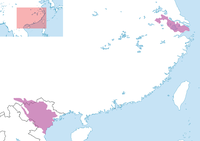
| |
| American ivory-billed woodpecker | Campephilus principalis principalis |  |
8 April 2022 | Critically Endangered D | 1-50 | 0 | 1-50 | 
|
| Fernandina Island Galápagos tortoise | Chelonoidis niger phantasticus | N/A | Critically Endangered (Possibly Extinct) D | 0-5 | 1 | 1-6 | 
| |
| Northern Sumatran rhinoceros | Dicerorhinus sumatrensis lasiotis |  |
1993 | Critically Endangered A2abd; C1+2a(i) | 0-9 | 0 | 0-9 | Tamanthi Wildlife Sanctuary, Myanmar |
| Vaquita | Phocoena sinus |  |
May 2024 | Critically Endangered A2a; C1+2a(ii); D; E | 6-10 | 0 | 6-10 | 
|
| Baishanzu fir | Abies beshanzuensis | N/A | Critically Endangered D | 3 | 1-9 | 4-12 | 
| |
| Bornean rhinoceros | Dicerorhinus sumatrensis harrissoni | N/A | Critically Endangered A2cd+3cd+4cd; C2a(i); D | 0-14 | 1 | 1-15 | ||
| Wood's cycad | Encephalartos woodii |  |
N/A | Extinct in the Wild | 0 | 1-36 | 1-36 | Kirstenbosch National Botanical Garden, South Africa |
| Loneliest palm | Hyophorbe amaricaulis | 
|
N/A | Critically Endangered | ??? | 1 | 1 | Curepipe Botanic Gardens, Mauritius |
| Hainan black crested gibbon | Nomascus hainanus |  |
2023 | Critically Endangered A2acd; B1ab(iii); D | 36-37 | 0 | 36-37 | 
|
| Gobi bear | Ursus arctos gobiensis | 12 April 2023 | Critically Endangered | 30-40 | 0 | 30-40 | 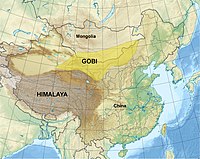
| |
| Māui dolphin | Cephalorhynchus hectori maui | 28 January 2023 | Critically Endangered A2cd+4cd; C2a(i,ii); D | 48-64 | 0 | 48-64 | 
| |
| Colossal squid | Mesonychoteuthis hamiltoni | 2015 | Least Concern | ??? | 0 | ??? | 
| |
| Indonesian Javan rhinoceros | Rhinoceros sondaicus sondaicus | 17 March 2023 | Critically Endangered D | 76-80 | 0 | 76-80 | 
| |
| Western Sumatran rhinoceros | Dicerorhinus sumatrensis sumatrensis | N/A | Critically Endangered A2cd+3cd+4cd; C2a(i); D | 30-80 | 7-8 | 37-88 | 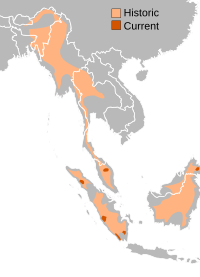
| |
| Ornate Ground snake | Erythrolamprus ornatus | 2012 | Critically Endangered D | 18-100 | 0 | 18-100 | Maria Islands Nature Reserve, Saint Lucia | |
| Saola | Pseudoryx nghetinhensis |  |
August 2013 | Critically Endangered A2acd+3cd+4acd; C2a(i) | 20-100 | 0 | 20-100 | 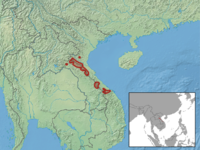
|
| Alagoas curassow | Mitu mitu |  |
N/A | Extinct in the Wild | 0 | 50-100 | 50-100 | 
|
| Horrid ground-weaver | Nothophantes horridus | N/A | Critically Endangered A3c | 1-99 | 1-9 | 2-108 |
| |
| Cat Ba langur | Trachypithecus poliocephalus | 8 November 2022 | Critically Endangered D | 130-150 | 0 | 130-150 | 
| |
| Siau scops owl | Otus siaoensis |  |
2017 | Critically Endangered D | 50-200 | 0 | 50-200 | Siau Island, Indonesia |
| South China tiger | Panthera tigris amoyensis |  |
N/A | Critically Endangered (Possibly Extinct in the Wild) | 0 | 150-200 | 150-200 | 
|
| Devils Hole pupfish | Cyprinodon diabolis | N/A | Critically Endangered B1ab(v)+2ab(v); C2a(ii) | 100-200 | 1-9 | 101-209 | Devils Hole, Death Valley National Park, United States of America | |
| Loa water frog | Telmatobius dankoi | N/A | Critically Endangered B1ab(iii)+2ab(iii) | 1-9 | 214 | 215-223 | Small streams along the Loa River southwest of Calama, Chile | |
| Bleeding toad | Leptophryne cruentata | 2003 | Critically Endangered C2a(i) | 1-249 | 0 | 1-249 | ||
| Black-naped pheasent pigeon | Otidiphaps insularis | September 2022 | Critically Endangered | 50-249 | 0 | 50-249 | Fergusson Island, Papua New Guinea | |
| Ganges shark | Glyphis gangeticus | February 2016 | Critically Endangered A2cd; C2a(i) | 1-249 | 0 | 1-249 | 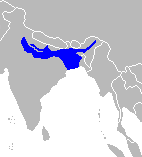
| |
| Pink-headed duck | Rhodonessa caryophyllacea | June 1935 | Critically Endangered | 1-49 | 0 | ??? | 
| |
| New Guinea big-eared bat | Pharotis imogene | March 2014 | Critically Endangered D | 49-249 | 0 | 49-249 | 
| |
| Wimmer's shrew | Crocidura wimmeri | 1988 | Critically Endangered B1ab(iii) | 5-250 | 0 | 5-250 | 
| |
| Archer's lark | Heteromirafra archeri | 2003 | Critically Endangered A3bc; C2a(i) | 50-250 | 0 | 50-250 | 
| |
| Spix's Macaw | Cyanopsitta spixii | N/A | Extinct in the Wild | 0 | 200-300 | 200-300 | 
| |
| Kākāpō | Strigops habroptilus |  |
N/A | Critically Endangered A2be | 0 | 250-300 | 250-300 | |
| Gurney's pitta | Hydrornis gurneyi |  |
2016 | Critically Endangered A3c | 50-300 | 0-5 | 55-305 |
|
| Cross River gorilla | Gorilla gorilla diehli | N/A | Critically Endangered C2a(i) | 250-300 | 1-9 | 251-309 | 
| |
| Philippine eagle | Pithecophaga jefferyi | N/A | Critically Endangered A2cd; C2a(ii) | 250-300 | 10-20 | 260-320 | 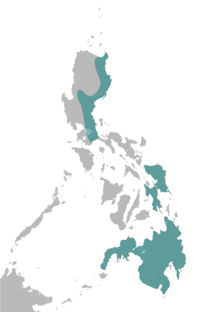
| |
| Amur leopard | Panthera pardus orientalis | N/A | Critically Endangered C2a(ii); D | 60-125 | 217 | 277-342 | 
| |
| North Atlantic right whale | Eubalaena glacialis | 22 August 2023 | Critically Endangered C2a(ii) | 350-400 | 0 | 350-400 | 
| |
| Black softshell turtle | Nilssonia nigricans |  |
N/A | Critically Endangered A4cd | 1-499 | 50-100 | 51-599 |
|
| California condor | Gymnogyps californianus |  |
N/A | Critically Endangered C2a(i); D | 300-350 | 150-200 | 450-550 | 
|
| Cumberlandian combshell | Epioblasma brevidens | N/A | Critically Endangered A1ce | 200–1,000 | ? | 200-1,000 | 
| |
| De Winton's golden mole | Cryptochloris wintoni | N/A | Critically Endangered (Possibly Extinct) B1ab(iii)+2ab(iii) | 1-999 | 1-9 | 2-1,008 | 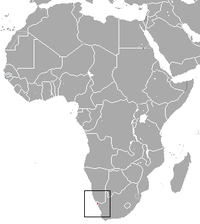
| |
| Lord Howe Island stick insect | Dryococelus australis | N/A | Critically Endangered D | 1-49 | 500–1,000 | 501-1,049 | Ball's Pyramid, Australia | |
| Wild Bactrian camel | Camelus ferus | N/A | Critically Endangered A3de+4ade | 1,000-1,500 | 100-200 | 1,100-1,700 | 
| |
| Key tree-cactus | Pilosocereus robinii |  |
N/A | Extinct in the Wild | 0 | 200–2,000 | 200-2,000 |
|
| Central rock rat | Zyzomys pedunculatus | N/A | Critically Endangered A2abce | 500–2,000 | 1-9 | 501-2,009 | 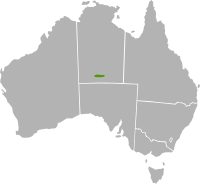
| |
| Eastern lowland gorilla | Gorilla beringei graueri | N/A | Critically Endangered A4bcd | 3,800-5,000 | 1-19 | 3,801-5,019 | 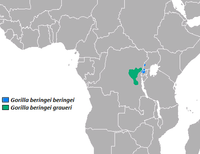
|
See also
[edit]- Abundance (ecology)
- Biodiversity Action Plan
- Chelonoidis nigra abingdonii
- Common species
- Critical depensation
- Endangered Species Recovery Plan
- Rare Species Conservation Centre
References
[edit]- ^ "Assessment Process". www.iucnredlist.org. Retrieved 2017-11-14.
- ^ R. MacNally and G. W. Brown, Reptiles and Habitat Fragmentation in the Box-ironbush Forests of Central Victoria, Australia: Predicting Compositional Change and Faunal Nested-ness, Oecologia 128:116–125 (2001).
- ^ Prendergast, J. R.; Quinn, R. M.; Lawton, J. H.; Eversham, B. C.; Gibbons, D. W. (1993-09-23). "Rare species, the coincidence of diversity hotspots and conservation strategies". Nature. 365 (6444): 335–337. Bibcode:1993Natur.365..335P. doi:10.1038/365335a0.
- ^ Dinerstein, Eric (2013) The Kingdom of Rarities. Island Press. ISBN 9781610911955.
- ^ "Rare Species". www.encyclopedia.com. Retrieved 2017-11-15.
- ^ "IUCN – A brief history". IUCN. 2017-10-06. Archived from the original on 2017-11-15. Retrieved 2017-11-15.
- ^ Briand, Frederic (October 2012). "Species Missing in Action - Rare or Already Extinct?". National Geographic.
- ^ "What is a rare plant?". www.fs.usda.gov. Retrieved 2024-04-12.
External links
[edit]Further reading
[edit]- Gorbunov, Y. N., Dzybov, D. S., Kuzmin, Z. E. and Smirnov, I. A. 2008. Methodological recommendations for botanic gardens on the reintroduction of rare and threatened plants. Botanic Gardens Conservation International (BGCI).







